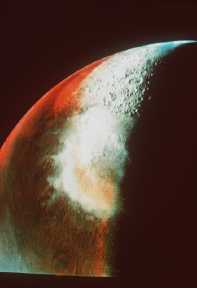This is an image of Mars.
Click on image for full size
Image from: NASA
The Cooling of Mars
Mars is small. Mars is about 1/3 the size of the Earth. This means that it cooled off very fast.
Mars probably started colder than the other earth-like planets. Then, Mars cooled rapidly from the outside, inward, like hardening candy. This caused the surface crust of Mars to rapidly thicken to the point of being immovable and prevented any further continental drift.
Much later, Mars finally warmed a little from inside. (Earth and Venus were already warm from inside!) Then a bubble of material rose from the deep interior of Mars, like the bubble in a tire, which pushed out and elevated the crust, and created the Tharsis Bulge, Olympus Mons, and the other volcanoes.
You might also be interested in:
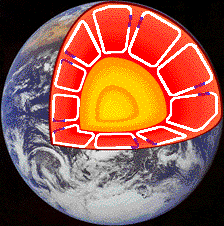
Planetary bodies cool off by 1.) motions inside the body, which bring hot material from deep inside, closer to the surface 2.) volcanism, which brings hot material onto the surface 3.) circulation in the
...more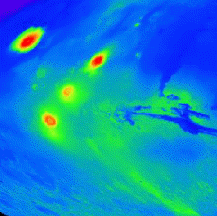
On this map of Mars, the lightly cratered Tharsis Ridge is shown, as well as the heavily cratered Martian highlands (near the bottom of the picture), and Valles Marineris to the right. The volcanoes are
...more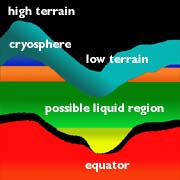
On Mars, the water is trapped, frozen, within the ground. Nevertheless, there is evidence for running water on Mars. When the water is melted and released to the surface, it will run from higher ground
...more
The drawing shows the depth at which water may be frozen into the ground. To have water running on the surface of Mars, this water region must be near to the surface. This may have happened at various
...more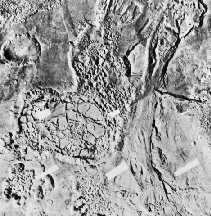
Separate from the Martian outflow channels, or the river valleys, are large Martian lakes (600 km, or ~1000 miles across) which once were part of a flood.
...more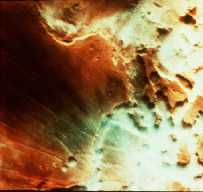
This picture shows fog on Mars. More fog has been seen in images returned by Mars Global Surveyor of the south polar region of Mars. Martian fog may have a little bit of acid mixed in with the water drops.
...more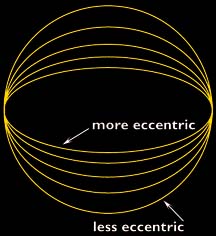
The orbit of Mars is very oval shaped. The orbit is much more oval shaped than the Earth's orbit. This means that the climate of Mars can change drastically between warm and cold.
...more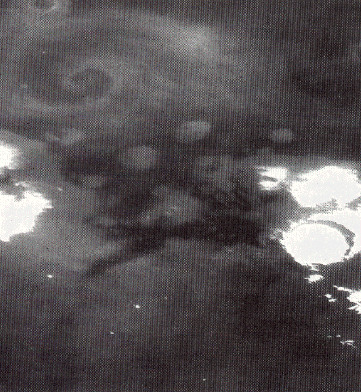
This is an image of a storm moving across the Martian land. The camera is looking down on the storm, the same way storms are presented on the news. The storm provides evidence that there is water on Mars.
...more


